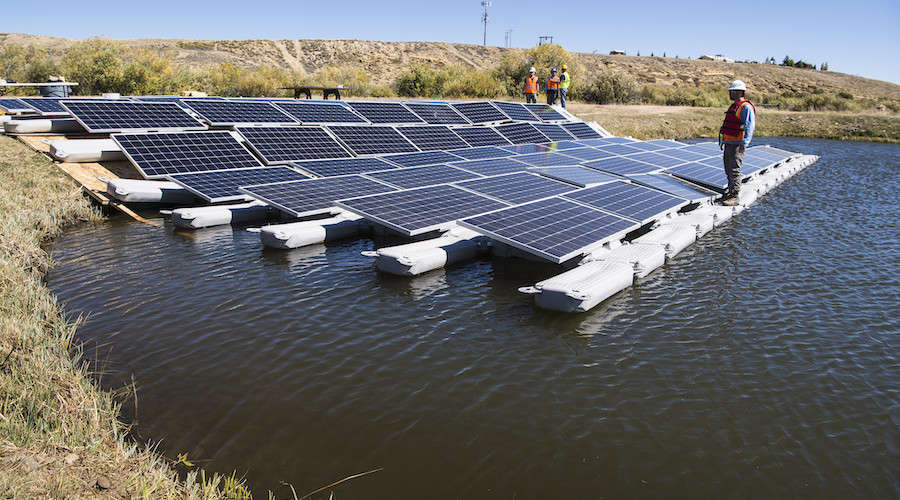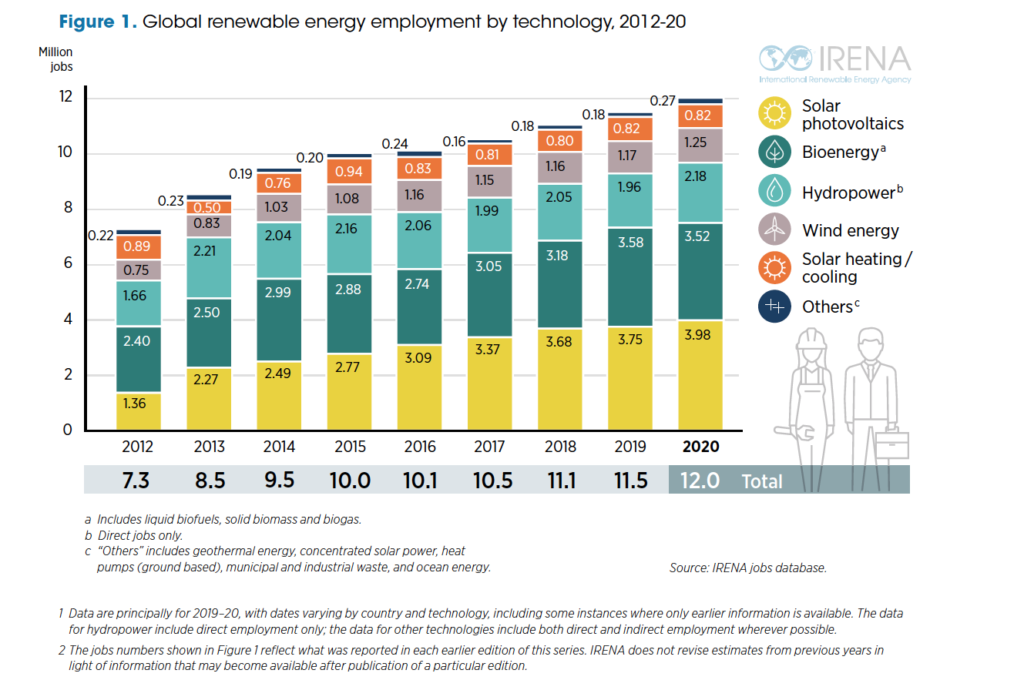Twelve million people now employed in the renewable energy sector – report

A recent report by the International Renewable Energy Agency (IRENA) and the International Labour Organization states that renewable energy employment worldwide reached 12 million in 2020, up from 11.5 million in 2019.
According to the report, in spite of the slowdown caused by the covid-19 pandemic, solar and wind jobs continued to grow and accounted for 4 million and 1.25 million jobs respectively. In other words, companies were able to limit job losses despite the fact that off-grid solar lighting sales went down.
Liquid biofuels employment, on the other hand, decreased to 2.4 million from 2.5 million due to covid-19-related reductions in demand, lower prices for conventional transport fuels and adverse policy changes.
IRENA data show that China commanded a 39% share of renewable energy jobs worldwide in 2020, followed by Brazil, India, the United States, and members of the European Union.
“Many other countries are also creating jobs in renewables. Among them are Viet Nam and Malaysia, key solar PV exporters; Indonesia and Colombia, with large agricultural supply chains for biofuels; and Mexico and the Russian Federation, where wind power is growing,” the review reads. “In Sub-Saharan Africa, solar jobs are expanding in diverse countries like Nigeria, Togo, and South Africa.”

IRENA and ILO’s research also found that more jobs will be gained by the energy transition than lost. An ILO global sustainability scenario to 2030 estimates that the 24-25 million new jobs will far surpass losses of between six and seven million jobs.
“Some five million of the workers who lose their jobs will be able to find new jobs in the same occupation in another industry,” the report states while forecasting that the clean energy sector could employ 43 million people by 2050.
The organizations believe that by mid-century, solar would account for 19.9 million jobs, followed by bio-energy at 13.7 million, wind at 5.5 million and hydropower at 3.7 million.
In their view, energy transition technologies such as batteries for electric vehicles and green hydrogen could also become major sources of jobs, as electrolyzers and other green hydrogen infrastructure can create about 2 million jobs globally from 2030 to 2050.
“The potential for renewable energy to generate decent work is a clear indication that we do not have to choose between environmental sustainability on the one hand and employment creation on the other. The two can go hand-in-hand,” wrote ILO director-general Guy Ryder.
More News
Prime Minister Mark Carney vows to speed permits, make Canada energy superpower
The Liberal Party leader said at a campaign stop in Calgary that his government would create a Major Federal Project Office with a “one project, one review” mandate.
April 09, 2025 | 03:34 pm
Peru mining chamber sees copper output up 2-4% this year
That would put Peru's copper production between 2.79 million and 2.85 million metric tons.
April 09, 2025 | 02:53 pm
Aurubis to ramp up new US copper recycling facility
Aurubus has invested $800 million building the project, which took four years.
April 09, 2025 | 02:50 pm
{{ commodity.name }}
{{ post.title }}
{{ post.excerpt }}
{{ post.date }}




Comments